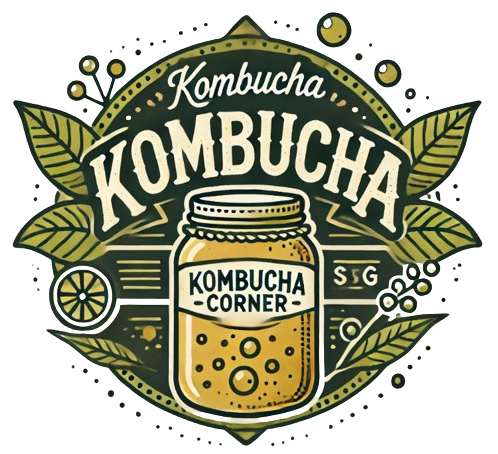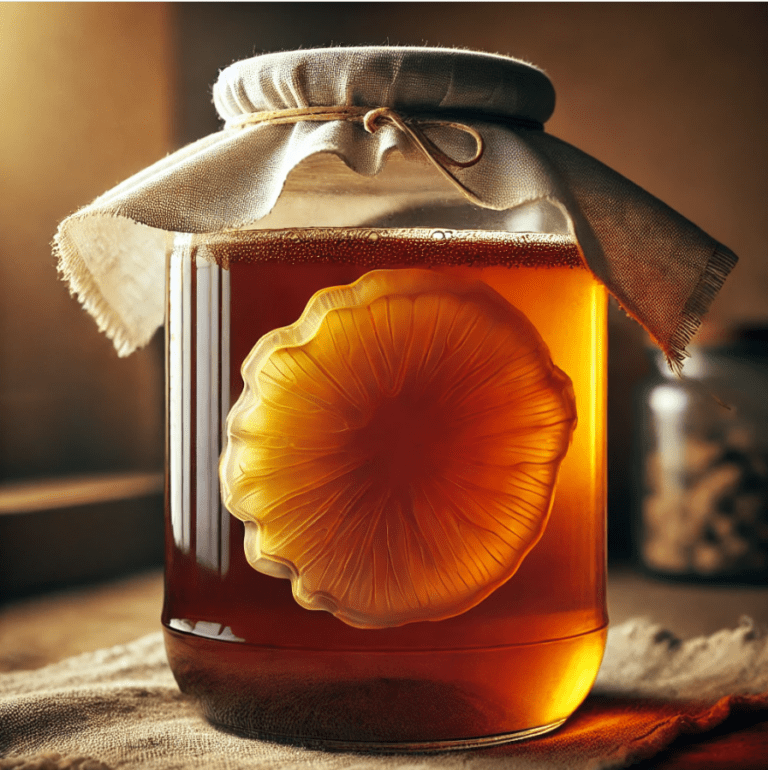Kombucha Fermentation Methods: Traditional, Continuous, and Back-Slopping Explained
Introduction: The Varied Art of Brewing Kombucha Kombucha, with its ancient roots and modern-day popularity, has evolved into a diverse craft with…
Introduction: The Varied Art of Brewing Kombucha
Kombucha, with its ancient roots and modern-day popularity, has evolved into a diverse craft with multiple brewing methods. Whether you’re a purist sticking to traditional techniques, a fan of the ongoing process of continuous brewing, or interested in the speed and consistency of back-slopping, there’s a method for every kombucha lover. This article dives deep into these kombucha fermentation methods, backed by the latest scientific research, to help you understand the best practices, potential risks, and how to monitor your brew effectively.
The Science Behind Kombucha Fermentation Methods
A recent study published in Frontiers in Microbiology sheds light on the intricate processes involved in kombucha fermentation, particularly when using the back-slopping method. This research is critical for understanding how different fermentation methods influence the microbial communities and metabolite production in kombucha, which in turn affects the safety, flavor, and health benefits of the final product.
Key Findings:
- Microbial Communities: The study explored the microbial succession in kombucha over a 12-day fermentation period using the back-slopping method.
- Researchers found that the microbial communities were similar in the early and late stages of fermentation, supporting the stability of the back-slopping method.
- However, the composition of these communities was dynamic, with different bacteria and yeasts dominating at various stages.
- Metabolite Production: Metabolite analysis revealed the presence of both beneficial and harmful compounds. Notably, biogenic amines—which can be toxic in large amounts—were found to increase during the fermentation process.
- The study also highlighted the fluctuating levels of ethanol and caffeine, showing how microbial activity influences these compounds throughout fermentation.
- Safety Concerns: The accumulation of biogenic amines and fluctuations in ethanol content underscore the importance of careful monitoring and control, especially when using the back-slopping method.
- The study emphasizes the need for maintaining a low pH (around 3.5) throughout fermentation to prevent the growth of harmful microorganisms.
What Are Biogenic Amines, and Why Should You Care?
Biogenic amines are naturally occurring compounds that can form during the fermentation process. They result from the breakdown of amino acids by certain bacteria and yeasts. While small amounts are usually harmless, high levels of biogenic amines—such as histamine and tyramine—can cause adverse reactions in some people, including headaches, nausea, and high blood pressure.
In kombucha, these compounds can accumulate if the fermentation process isn’t carefully controlled, particularly in methods like back-slopping where the environment is less dynamic. Monitoring your brew’s pH and fermentation time helps reduce the risk of excessive biogenic amine production, ensuring your kombucha is both safe and enjoyable to drink.
Traditional Kombucha Brewing: The Classic Batch-by-Batch Approach

Traditional brewing is the method most kombucha enthusiasts are familiar with. This process involves using a SCOBY and some starter liquid from a previous batch to ferment a new batch of sweetened tea. The fermentation typically lasts 7-30 days, during which the microbial community naturally evolves, leading to a unique flavor profile for each batch.
- Starting Without Starter Liquid: If you’re only using the SCOBY without adding starter liquid, the initial pH of your brew may be higher, around 5.5 to 6.5. Over the course of fermentation, the pH will gradually drop as the bacteria produce acetic acid, but it may take longer to reach the safer acidic level below 4.5.
- Using Starter Liquid for Safety: To ensure a quicker and safer drop in pH, most brewers add some acidic starter liquid from a previous batch. This helps lower the pH to below 4.5 right from the start, reducing the risk of mold and harmful bacteria. By the end of fermentation, a well-brewed kombucha should have a pH around 3.5.
- Pros: Allows for natural microbial balance, produces deep and complex flavors, and reduces the risk of harmful compounds with proper care.
- Cons: Slower process, with potential risks if the pH isn’t managed well, leading to mold or contamination.
Continuous Kombucha Brewing: A Steady Supply of Brew

In continuous brewing, a large vessel is used to maintain an ongoing fermentation process. After drawing off some kombucha for consumption, fresh sweet tea is added back to the vessel. This method allows for a consistent supply of kombucha without the need to start a new batch each time.
- Pros: Provides a steady supply of kombucha, maintains consistent flavor, and reduces the need for frequent setup.
- Cons: Requires regular maintenance of the brewing vessel and SCOBY, and over time, the flavor may become overly strong or acidic.
Back-Slopping: Fast and Consistent, But Requires Vigilance
Back-slopping is a more modern technique where a portion of liquid from a finished batch is reused to start a new batch. This method accelerates fermentation and can produce consistent results, but it comes with its own set of challenges.
The Frontiers in Microbiology study highlighted how back-slopping creates a stable microbial environment early on, but it also found that harmful compounds like biogenic amines could accumulate over time. This necessitates careful monitoring to ensure the final product remains safe to consume.
- Pros: Faster fermentation, consistent outcomes, and more control over the brewing process.
- Cons: Requires careful oversight to avoid the buildup of harmful by-products, and each batch needs fresh setup and monitoring.
How to Monitor Your Kombucha Brew for Safety
Effective monitoring of your kombucha brew is essential, regardless of the method you choose. Here’s how to do it:

pH Monitoring:
- Use pH Strips or a pH Meter:
- pH Strips: Dip the strip into your kombucha, compare the color change to the provided chart, and ensure your brew is below pH 4.5, ideally closer to 3.5 by the end of fermentation.
- pH Meter: Provides more precise readings. Just calibrate the device, dip it into your kombucha, and read the pH level.
- pH Strips: Dip the strip into your kombucha, compare the color change to the provided chart, and ensure your brew is below pH 4.5, ideally closer to 3.5 by the end of fermentation.
- When to Check: Test the pH at the beginning and every 2-3 days to ensure it’s dropping into the safe range. A high pH might indicate issues with the fermentation process.
Visual and Sensory Monitoring:

- Look for Mold: Regularly inspect the surface of your kombucha. Mold is usually fuzzy and can be white, green, black, or blue. If you see mold, it’s best to discard the batch.
- Smell and Taste: Kombucha should have a tangy, slightly vinegary smell. If it smells off, like rotten eggs, it could be contaminated. Taste your kombucha to gauge its progress—but only if the pH is in a safe range.
Temperature Control:
- Maintain the Right Temperature: Kombucha ferments best between 68-78°F (20-26°C). Use a thermometer to monitor the brewing area’s temperature. Too cold can slow fermentation, and too hot can create unwanted by-products.
- Adjust as Needed: If the environment is too warm or too cold, consider moving your kombucha or using a heating mat or cooling methods to stabilize the temperature.
Fermentation Duration:
- Track the Days: Record when you start each batch and how long it’s been fermenting. Kombucha typically takes 7-14 days to ferment. Regularly taste your brew after the first week to decide when it’s ready.
Using Starter Liquid:
- Add Acidic Starter Liquid: Always use starter liquid from a previous batch (or commercial kombucha) along with the SCOBY to ensure a quick drop in pH, creating a safer environment.
How to Choose the Best Kombucha Fermentation Method for You

Understanding the differences between these three methods can help you determine which is best suited to your brewing style:
- Traditional Brewing: Ideal for those who enjoy the craft of kombucha and appreciate the nuanced flavors that come from a longer, more hands-on process.
- Continuous Brewing: Perfect for those who want a steady supply of kombucha without the hassle of starting new batches regularly. It’s convenient and consistent, but requires ongoing maintenance.
- Back-Slopping: Suitable for those looking for speed and consistency but willing to put in the extra effort to monitor the process closely. This method is great for more experienced brewers who want to experiment with faster fermentation.
Safety First: Ensuring Quality in Every Brew
Regardless of the method you choose, safety is paramount. The Frontiers in Microbiology study emphasizes the importance of maintaining a low pH (below 4.5) and regularly monitoring your kombucha to prevent the buildup of harmful compounds.
Tips for Safe Brewing:
- Monitor pH levels: Keep an eye on the pH throughout fermentation to ensure it stays in the safe zone.
- Use starter liquid: Whether you’re using traditional or back-slopping methods, including some starter liquid helps lower the pH quickly.
- Watch for harmful compounds: Especially with back-slopping, be aware of potential biogenic amines and other unwanted by-products.
Conclusion: Mastering the Art and Science of Kombucha Brewing
Brewing kombucha is a delicate balance of art and science. Whether you prefer the time-honored traditional method, the efficiency of continuous brewing, or the speed and consistency of back-slopping, understanding the microbial dynamics, pH levels, and safety precautions is key to producing a delicious and safe beverage.
The insights from recent research, coupled with practical brewing tips like managing pH and using starter liquid, underscore the importance of careful monitoring and quality control. By choosing the method that best fits your style and following best practices, you can enjoy the process of brewing kombucha and the satisfaction of creating a healthy, flavorful drink.






